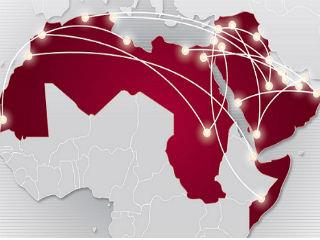by Uri Dromi*
The heinous Oct. 7 terror Attack by Hamas, which had cost the lives of close to 1,200 Israelis, provoked a harsh response by Israel, which left Gaza with many of its people dead and great parts of it destroyed.
While every death of an uninvolved person in Gaza is regrettable, no one has yet come up with a better idea of how to fight a terror organization which uses civilians as human shields. Other examples of how democracies have struggled with this challenge expose the grim realities which radical Islam has brought upon wretched Arabs everywhere, with Iraq and Afghanistan coming immediately to mind.
The question now is how to break this cycle of violence, and avoid bringing more suffering to the already miserable people of Gaza, while guaranteeing the Israelis that such attacks upon their land and people are not repeated. My friend Saul Simon has an idea.
Simon, son of Harold “Smoky” Simon, one of the founders of the Israeli Air Force (IAF) and himself one of the first F-15 pilots of the IAF, has since his retirement from active duty dedicated himself to promoting Israel’s high-tech industry. Both in the air, where he had fought enemy pilots in scary dogfights, or on the ground, where he had to excel amidst fierce competition, Simon has always produced innovative, out-of-the-box ideas of how to cope with dire situations and problems.
Indeed, ideas have been floating around recently about the future of Gaza, from President Trump’s “Riviera plan,” which advocates the removal of the locals from what he sees as a prime piece of real estate, to the more sober resolution of the Arab League on reconstructing Gaza while removing Hamas from its present leading – and poisonous – position.
Simon, who has been pondering these ideas, adds his fresh perspective. “We must put the people of Gaza and anyone who cares about them on the horns of the dilemma,” he told me this week. “Gaza should indeed be reconstructed, and the people there should return to their rebuilt homes or get new ones. This, according to the Arab League and Egyptian estimates, would cost some 53 billion dollars. However, if Gaza once again becomes a hotbed for terror and keeps threatening Israel, then Israel would destroy Gaza again.
If that happens, then Israel should go out of its way not to harm people in Gaza who are not involved in terror. However,” Simon concludes, “the message to the Gazans should be simple and clear: If you keep harboring terror and harassing Israel, we won’t intentionally go after your lives, but you’ll definitely lose your homes again. Then let’s see who would be willing to invest those tens of billions of dollars over and over again.”
In other words, hope will come when Palestinians have something valuable to lose, like their homes.
There is a great example of how Arabs can enjoy living in the best possible conditions, once freed from the yoke of radical Islam: Masdar City in the United Arab Emirates. I visited there a month ago, and was amazed at how in the desert, this City of the Future emerged, blending sustainable urban living, renewable energy, green building practices and advanced technologies.
But why wander to the Gulf, when next to Israel, in the West Bank, there is the new city of Rawabi, which competes with any of the most advanced cities of Israel, and which prompted William Booth to write in the Washington Post that “Rawabi is the counternarrative in the forever conflict in which Palestinians are often portrayed as terrorist or victim, living in refugee camps or dusty villages out of biblical times.”
Now we are told that Bashar Masri, the visionary entrepreneur who has founded Rawabi, serves as a close adviser to Adam Boehler, President Trump’s envoy to the region. My guess is that quietly, he’ll see Saul Simon’s point.
*Urii Dromi was the spokesman of the Yitzhak Rabin and Shimon Peres governments from 1992-1996.




 By: N. Peter Kramer
By: N. Peter Kramer
